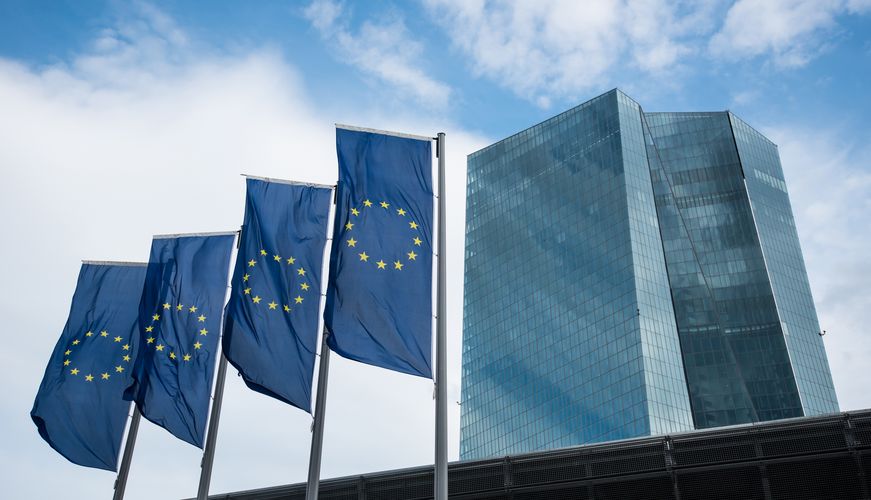Through the pilot phase of its Project Bond Initiative and into the next stage of its credit enhancement products, the EIB has proved its value in facilitating non-bank investor flows into financing infrastructure. Lessons learned will be key to opening up capital to new types of project risk. It will also establish a model of practice for multi-nationals to be replicated elsewhere in the world.
In the wake of the 2008 financial crisis, liquidity all but disappeared from the European infrastructure market. Conventional sources of funding deteriorated as banks reacted to stricter prudential regulation and curtailed their long-term lending operations, while monoline insurers also took a step back from the market.
The deteriorating risk appetite for infrastructure projects was additionally compounded by increased pressure on public finances.
It left European Union policy-makers with a problem to solve: how to encourage the capital markets to plug the funding gap left by the traditional financing supporters of infrastructure and maintain its attempts to stimulate economic growth. It was a sizeable hole to fill.
If the aims of the EU’s 2020 objectives were to be achieved, then an estimated €1.5trn–€2trn of investment in infrastructure would be required across transport, energy and information technology over a 10-year period.
“The answer would be to look elsewhere for capital,” said Tim Conduit, partner at Allen & Overy, “to the likes of insurance companies, pension funds and debt funds.”
Mobilising finance into infrastructure from a new breed of investor would need innovation and encouragement.
“We were looking at a case of market failure,” said Andrew Davison, senior vice-president, Infrastructure Finance Group, at Moody’s Investor Services. “It needed a bold response from policy-makers in order to address the problem of such a massive funding gap.”
In response to the problem, the EU developed a number of financial instruments, one of which was the Project Bond Initiative (PBI), which allowed the European Investment Bank to provide credit enhancement to project bonds issued by companies undertaking eligible projects. The pilot phase of the PBI was launched in 2012.
“The challenge was to stimulate the development of a functioning non-bank market rather than distort it by flooding the sector with public funds,” said Conduit. “It needed the EIB to mitigate the more difficult risks inherent in projects while allowing investors to take on the risks and rewards elsewhere in the financial structure.”
Widening appeal
The idea was to use credit enhancement, in either of two forms: a funded subordinated loan or as a letter of credit covering 20% of the value of the bond, in order to improve the senior debt rating of the paper by a couple of notches. This Project Bond Credit Enhancement (PBCE) programme was seen as a means of widening the attraction of the deal to an institutional investor base.
“The PBCE effectively provided just enough support to bring the bond’s credit rating into the A–/BBB+ levels,” said Conduit. “The perceived sweet spot – at least at the time of the PBCE’s inception – for this type of debt investor.”
The pilot phase of the PBI came to a close in September of 2016, having been extended to 10 projects reaching financial close before its conclusion. It was a heralded as a success – at least in terms of facilitating a level of non-bank finance into projects.
“Over €5bn of private sector funding has been delivered to infrastructure projects as a direct result of the PBI, supported by the €1bn of public sector guarantees provided by the EIB,” said Conduit.
The efficacy of the programme is evident in a number of deals in which it was utilised. One of the first transactions – the Castor Gas Storage Facility, the financing of which included a €1.4bn bond due 2034 – quickly ran into trouble due to unexpected seismic activity. The project was terminated and all financial obligations were respected, with the bond being paid up in full.
“This outcome would have been unlikely without the presence of the EIB’s support,” said Conduit.
And for two other bonds that formed part of the pilot, those associated with road projects in Italy and Ireland (the CAV €830m 2.115% due December 2030 and the New Ross N25 €145.4m 2.684% due January 2042), the credit enhancement resulted in ratings being uplifted above the respective sovereign.
“The initiative has validated EIB credit-enhanced project bonds as a viable financing option,” said Davison.
Learning curve
Despite the undoubted success of the pilot scheme, it did not survive without some criticism and, undoubtedly, lessons have been learned.
The market has changed. The number of institutional players in the market has increased, as has the level of sophistication within some of these funds. Different investors now have varying levels of risk appetite.
“As the bank market has recovered and the institutional market has grown, risk/reward expectations have changed to become more borrower-friendly,” said Davison. “Some of the deals that closed could have been structured differently, without the need for credit enhancement.”
An expanding investor base also brings with it different requirements when it comes to the preferred instrument through which to lend. The latest iteration of credit enhancement products from the EIB has taken this into account, and the Senior Debt Credit Enhancement facility (SDCE) can be used to enhance the credit rating of both bank loans and bonds or institutional tranches, as well as senior debt provided by multilaterals, including the EIB itself.
“The SDCE has opened up credit enhancement for bank lending too,” said Davison. “It expands the pipeline of bankable projects that would otherwise struggle to attract senior debt. It’s a major development.”
The SDCE can be used on a wider arrange of deals to reflect and support an increasingly complex mix of funding possibilities in the European infrastructure market and the wider participation of institutional investors and banks.
The current facility has even more flexibility in respect of the percentage of senior debt enhancement it allows. This has been raised from 20% to 30%.
“The product has gone through a normal evolution in its development,” said Massimo Pecorari, global head of infrastructure and power at UniCredit. “It provides more flexibility to optimise the costs and adapt to wider range of investors needing a wider range of financing structures.”
The first use of the SDCE, in the refinancing of the A8 motorway in Germany, exemplifies the value of flexibility in addressing complex needs. Here, the EIB’s credit enhancement joined the mix of privately placed bonds and senior loan financing in order to get the deal done.
The structure consisted of €80m of senior project bonds privately placed with institutional investors MEAG and La Banque Postale Asset Management; €138m of senior commercial bank loans provided by KfW IPEX-Bank, Nord/LB, SEB and Societe Generale; a €138m structured senior secured loan from the EIB; €71m of subordinated fixed-rate EIB SDCE; and subordinated shareholder loans from the sponsors.
The main reason was the lenders’ perceived uncertainty regarding long-term traffic development, on the back of the many lessons learnt from the crisis.
In this case, the SDCE managed to address the risks associated with this, allowing the sponsors to raise senior debt at attractive levels to the borrower.
Going global
Although successful in its own right, another measure of success has been the increase in the number of funds that are now willing to take part in the market. And it is not just investors in Europe that are inclined to participate, as the ranks of “domestic” debt funds have been swelled by institutions based in the US, Asia and Australia.
Lessons already learned, growing experience within the debt funds entering the market and a re-evaluation of the risk/reward expectations may be at the point of making the multilateral’s assistance unnecessary in some deals. There are calls for a re-assessment as to the value for money derived from the use of public resources.
“There’s very little need for public finding in core geographies,” said Conduit. “Future credit enhancement products should be deployed where there are risks associated with more challenging jurisdictions or more challenging projects and technologies which need to be mitigated.”
Pecorari agrees. “Credit enhancement should be directed towards riskier projects, like telecoms or offshore wind, and towards market risk to bring sub-investment-grade projects into the investment-grade sphere, for instance,” he said.
But while market conditions may mean that the EIB’s presence is less required in some areas of the market, just having gone through a live process and refining the approach has wider implications than merely seeing through the deals that have closed.
“Every time one of these complex deals is closed, it moves the process and documentation towards a level of standardisation and transparency that makes optimising the financing of future transactions ever easier,” said Pecorari.
There is a straight correlation between the use of the product and investors waking up to the opportunities and accepting the risks involved. It validates the use of the instrument and sets an example of how multilaterals can play a part in filling the infrastructure investment gap throughout the rest of the world.
To see the digital version of this roundtable, please click here
To purchase printed copies or a PDF of this report, please email gloria.balbastro@tr.com



